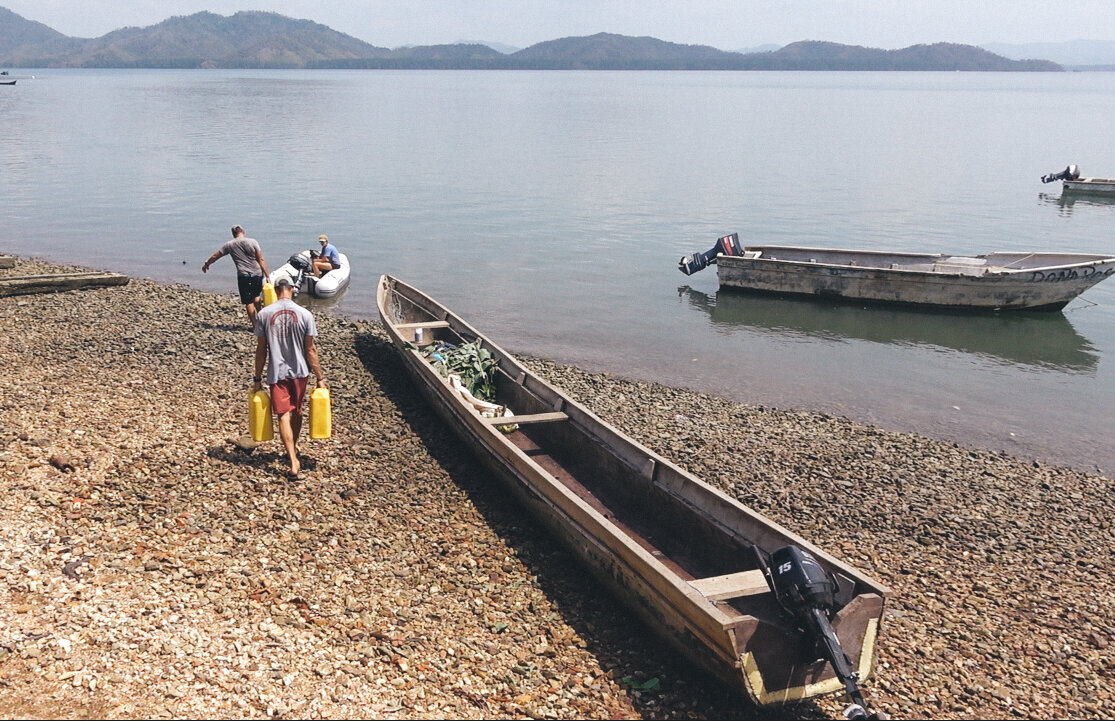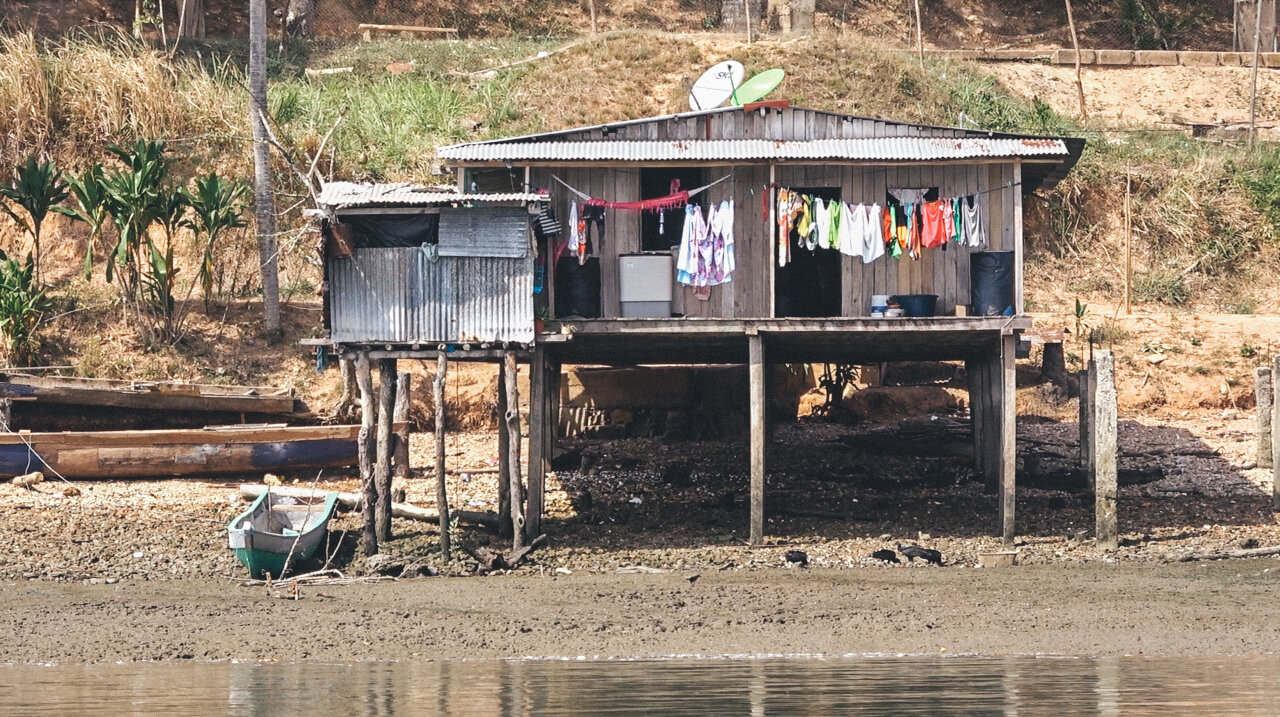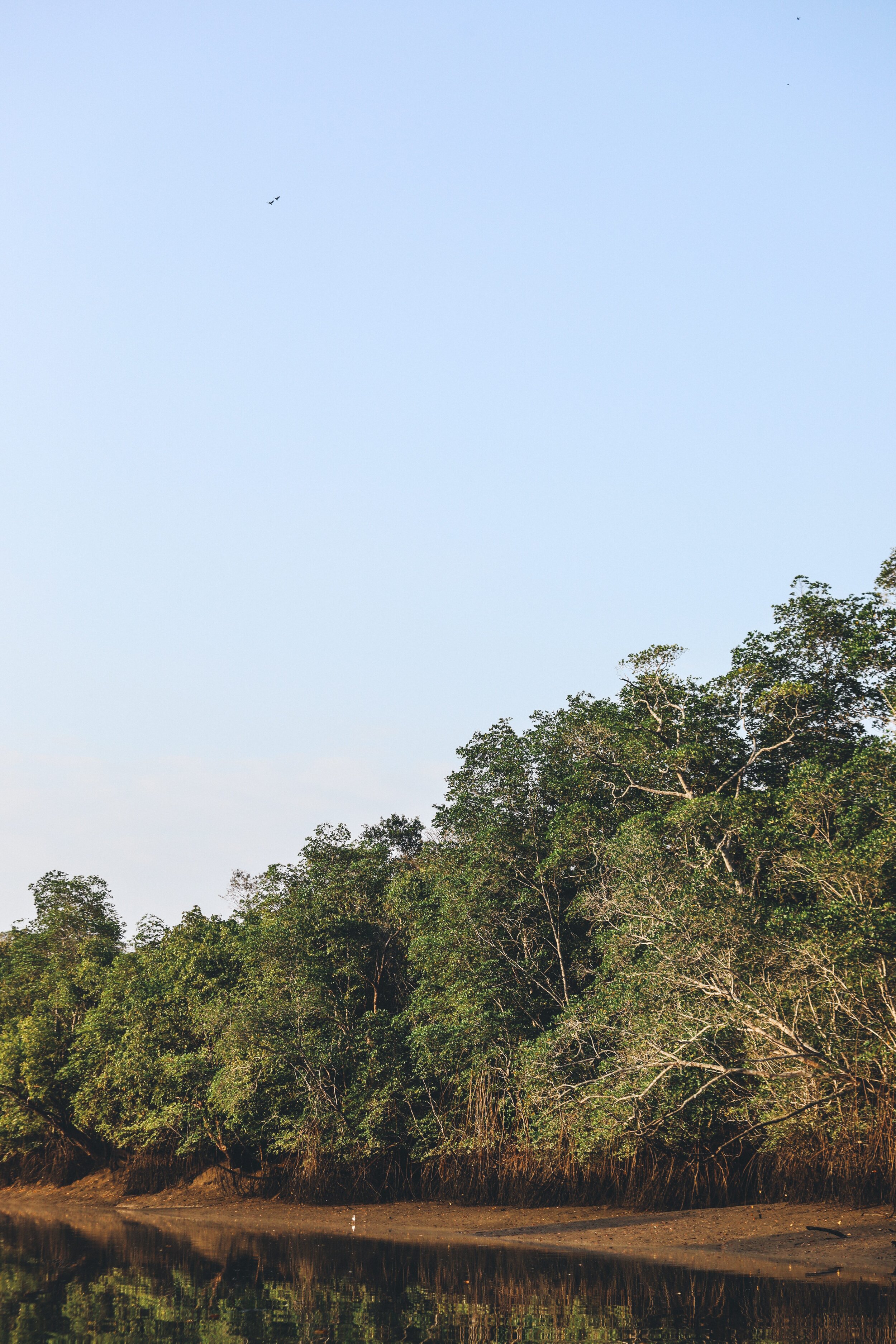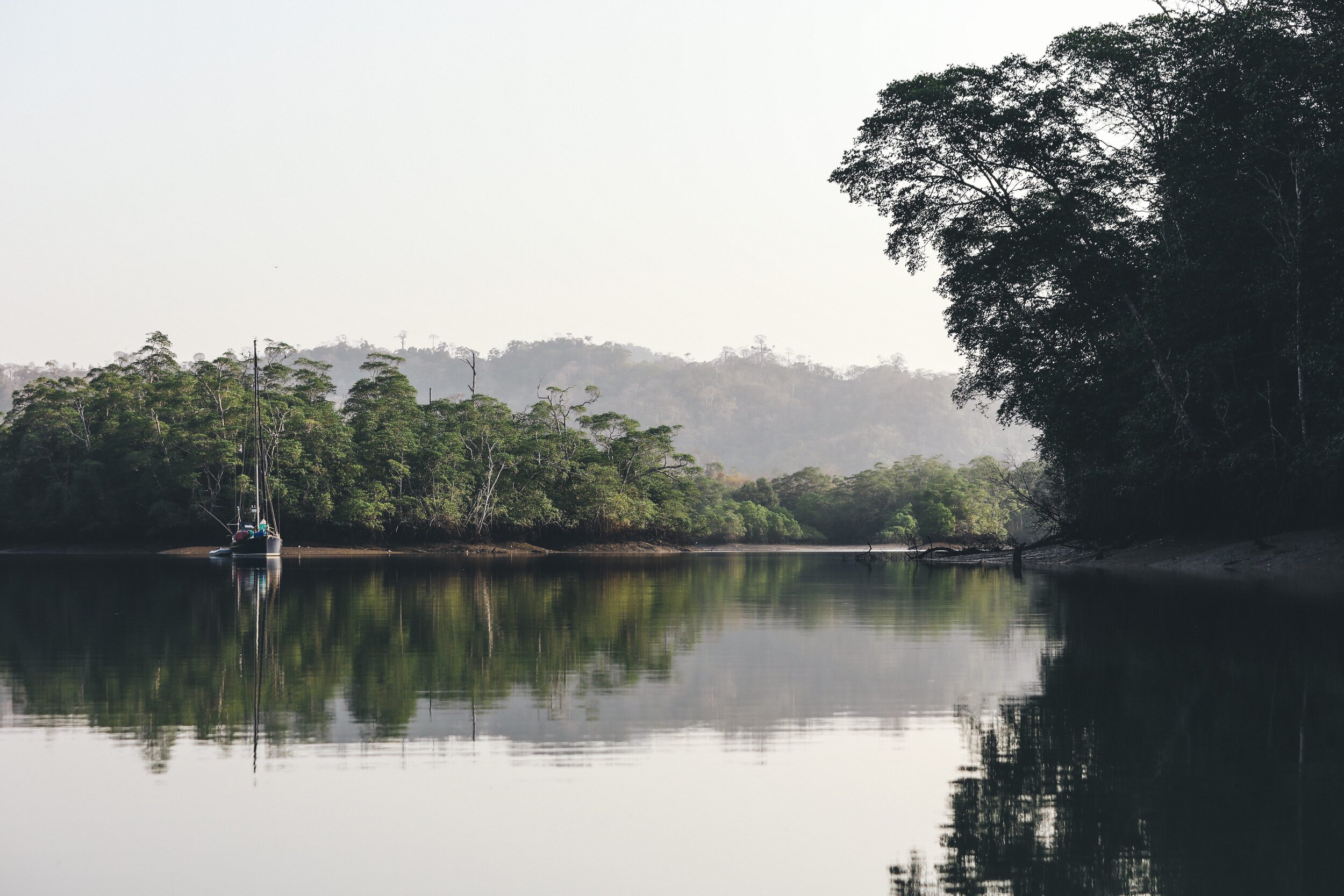Exploring the Darien Gap
The area surrounding the border of Panama and Colombia is known as the Darién Gap, a large swath of undeveloped swampland and forest. With no roads, it is the missing link of the Pan-American Highway. With limited access to the coast by rivers, and large expanses of dense jungle this area has remained largely undeveloped until recently. The mostly indigenous population here still dresses in traditional clothing and reside in the raised wooden homes.
We had been looking forward to taking our boat up the extensive river system here and were even more exited when our buddy boat, Halcyon, decided to join as well. Having at least one other boat with you while traveling in this area is advisable, as there is still drug running happening from the Columbia border, as well as the risk of grounding in the shallow uncharted waters.
The entrance to this maze of rivers on the pacific side of Panama begins in the Gulf of San Miguel. This is where we would enter the Rio Tuira, one of the most bio diverse places on the planet. We could not wait to explore this area but we were still a little nervous as we headed up the river. After all, these waters were almost completely uncharted and we had recently finished repairing Agape after running aground on an uncharted rock in the Las Perlas Islands. Not only that, but Halcyon’s depth sounder wasn’t working, so we’d have to lead the way. But, almost like clock work a pod of dolphins showed up escorting us up the river to the village of La Palma. If you’ve been following along on our journey for a while you might remember that whenever we have decided to adventure up rivers, anchor at night or cross scary sand bars, these amazing animals always seem to show up. It’s like they can sense our anxiety and they come along to ease our nerves and guide us in.
Dolphin friends guiding us in!
The river was loaded with these jelly fish, even over 25 miles up the river system.
La Palma
Moving the boat in these waters is dictated by the tide, not only to ensure that you have enough water under your keel, but the currents here can reach several knots. We would leave an anchorage at mid rising tide, so we had a few hours to make it to another protected anchorage before the tide switched against us and we’d have to fight the strong current. It is advisable to travel up river on an incoming tide incase you do ground your boat, the rising tide can help lift you out of the mud.
From our first anchorage in Ensenada Mogui, we would motor up the river Tuira to the largest town in the Darien, La Palma. This was a fairly easy motor, both Halcyon and Agape glided through the deep dark water effortlessly as we scanned the river banks for houses, birds, monkeys and signs of life. La Palma is what you would expect from the largest town in a remote region. There were small shops and markets, and we even found diesel for sale, but for the most part La Palma caters the locals needs alone. Very few boats, let alone tourists visit this region.
Our next stop was another day trip up the Rio Sabana, to the calmest water I think Agage has ever anchored in. Upstream of the anchorage the river is inhabited by the Wounaan people, mostly living in small huts along the river banks. There is a small village about a two hour dingy ride away, but since the recent addition of a paved road and electricity, life there has changed rapidly. We still made the long trip up river to visit the village and had a great time, but it was not quite what we had expected.
Though this area is supposed to be teaming with life, in the water, trees and the sky, we saw relatively little. Maybe it was due to the new road, the fact that it was the dry season, or some other unknown factor, but for the amount of dingy exploration we did I feel like we saw very little. We did notice the surrounding hillside had been clear cut for cattle farming and it seemed like very little of the surrounding area other than the mangroves was wild or untouched. It was sad to see even this extremely remote place so changed by man. We didn’t even see a single monkey or crocodile in all the hours of exploring the rivers and their tributaries!
But don’t let this detour you, as everyones experience will likely differ, and just taking your boat deep into the jungle’s river systems is a worth while adventure!!!
Agape and Halcyon would spend the week here moving through the river systems and racing through the tributaries by dingy when it became too shallow for the big boats. As we say far to often, we wish we would have stayed longer, but with our new “crossing crew” flying into the Galapagos and a good weather window quickly approaching, we decided it was time to reluctantly say goodbye to our friends on Halcyon and Panama as we set off to begin our longest passage to date, 900 nautical miles to the famed Galapagos Islands!














































